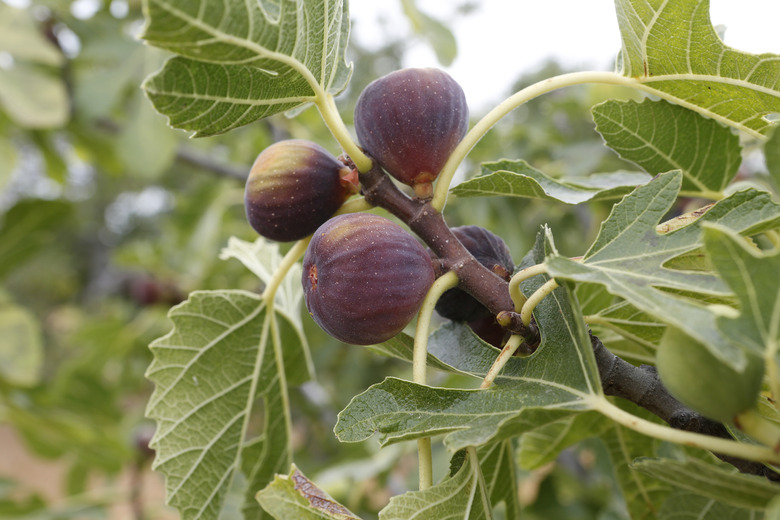How Long Does A Fig Tree Take To Produce Fruit?
The common fig (Ficus carica) is a self-fruitful tree, which means it does not require a partner for pollination. It prefers the warm, dry climates found in U.S. Department of Agriculture plant hardiness zones 7 through 11, depending on the cultivar. Under the right conditions, fig trees start to produce fruit when they are three to five years old.
Here's how to best care for a fig tree — including best practices on pruning and fertilizing.
How Long Before Fig Trees Reach Maturity?
How Long Before Fig Trees Reach Maturity?
A fig tree is generally three to five years old before it produce a sizable crop. One exception to this rule is the "ISU Purple," a fig comfortable between USDA zones 7 and 9, which can produce a small crop after one or two years. In the early years of planting, it is common for a fig tree to grow very small green figs that never get larger or ripen. The main crop develops on new growth in spring and early summer when the tree reaches maturity. Do not mistake lack of blooms for lack of fruit, since fig tree blossoms are hidden.
Best Locations for Fig Trees
Best Locations for Fig Trees
Figs require certain conditions to produce a bountiful crop. A location with southern exposure is best since they need at least eight hours of sunlight a day. Soils should be moisture-retaining but not water-logged. Low amounts of water cause flowers and fruits to drop, while too much water causes failure to flower or stunted fruit growth. Extreme weather conditions can also greatly affect fruiting potential. Extreme heat and dry weather can slow or stop productions. Winter cold and wind in the furthest reaches of USDA zone 8 can also cause slowed production or even tree death. The northernmost regions of the hardiness zones are best suited to cold-hardy varieties like "Brown Turkey" and "Celeste," both of which are hardy in USDA zones 7 to 10.
What Prevents Fruiting in Fig Trees?
What Prevents Fruiting in Fig Trees?
Nitrogen fertilizers are often used to encourage growth in plants. For fruiting trees like the fig, the growth that nitrogen fertilizer creates is limited to foliage. Over-fertilization will encourage large and fast-growing leaves, but this will suck the energy away from fruit growth. This practice produces a large, bushy tree with little to no fruit. Pruning can also cause unsuccessful fruiting. While some basic pruning for size and health is welcome, over-pruning during the winter months may inhibit fruit production because it will redirect the tree's energy into branch growth rather than into fruit growth.
Tips for Successful Fruiting
Tips for Successful Fruiting
Just as improper pruning can cause damage to a crop, correct pruning can help it to fruit more successfully. In winter, no later than February, pinch back branches just to the fifth set of leaves. Count five leaves up from the base of the branch and prune off the ends past that set of leaves. This not only keeps your tree compact, but it also encourages better production. Clean your pruning tool blades off with alcohol to keep from passing disease to the tree. Root pruning every few years can also encourage crop growth. At the very end of winter, before new growth begins, take a shovel or spade out about 2 feet from the tree trunk. Go in a circle around the tree in an alternating pattern: Plunge the shovel down in one spot to sever a shovel's width of the roots, and then skip one shovel's width as you move to the side. Repeat that pattern around the tree.
